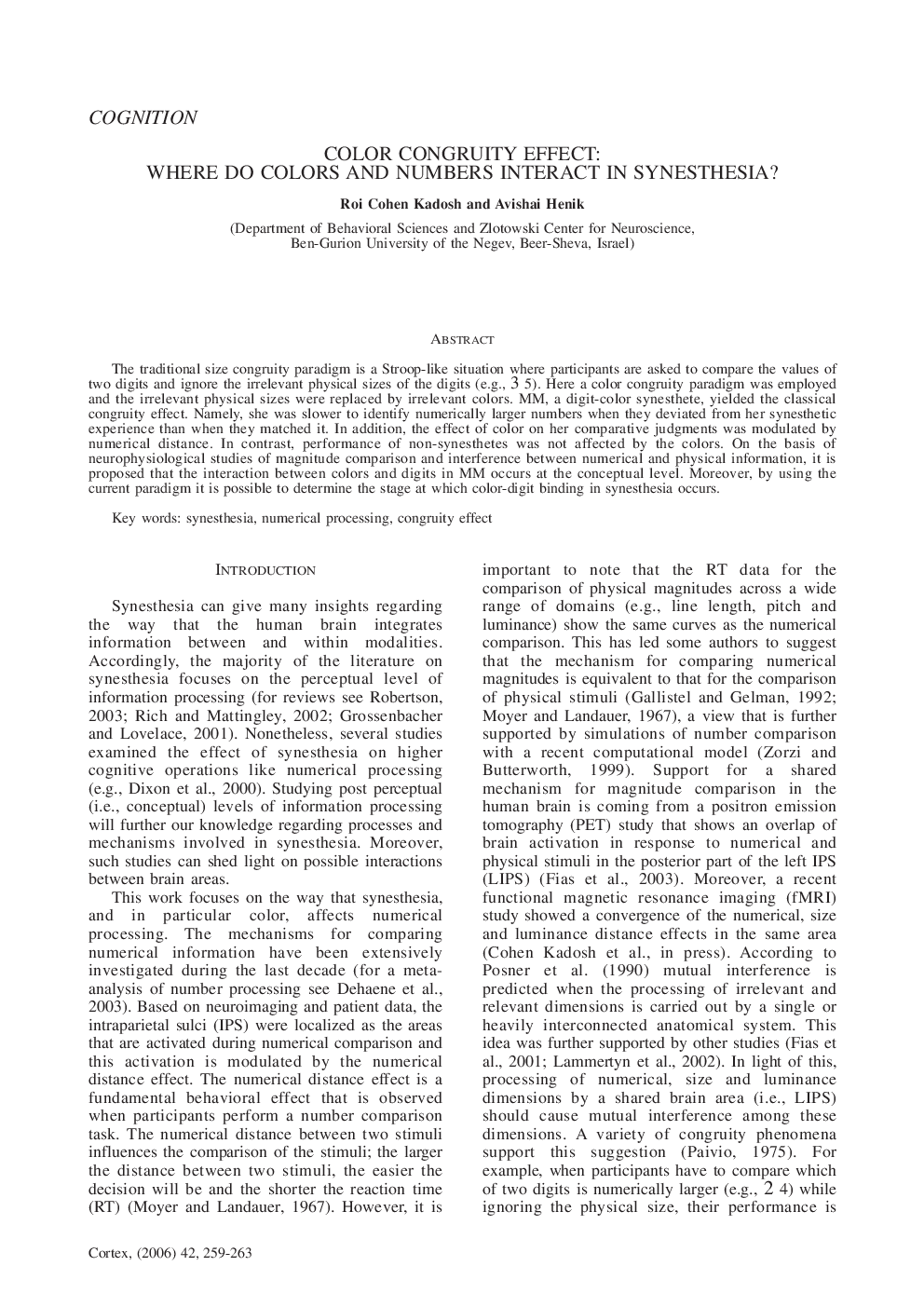| Article ID | Journal | Published Year | Pages | File Type |
|---|---|---|---|---|
| 943036 | Cortex | 2006 | 5 Pages |
The traditional size congruity paradigm is a Stroop-like situation where participants are asked to compare the values of two digits and ignore the irrelevant physical sizes of the digits (e.g., 3 5). Here a color congruity paradigm was employed and the irrelevant physical sizes were replaced by irrelevant colors. MM, a digit-color synesthete, yielded the classical congruity effect. Namely, she was slower to identify numerically larger numbers when they deviated from her synesthetic experience than when they matched it. In addition, the effect of color on her comparative judgments was modulated by numerical distance. In contrast, performance of non-synesthetes was not affected by the colors. On the basis of neurophysiological studies of magnitude comparison and interference between numerical and physical information, it is proposed that the interaction between colors and digits in MM occurs at the conceptual level. Moreover, by using the current paradigm it is possible to determine the stage at which color-digit binding in synesthesia occurs.
